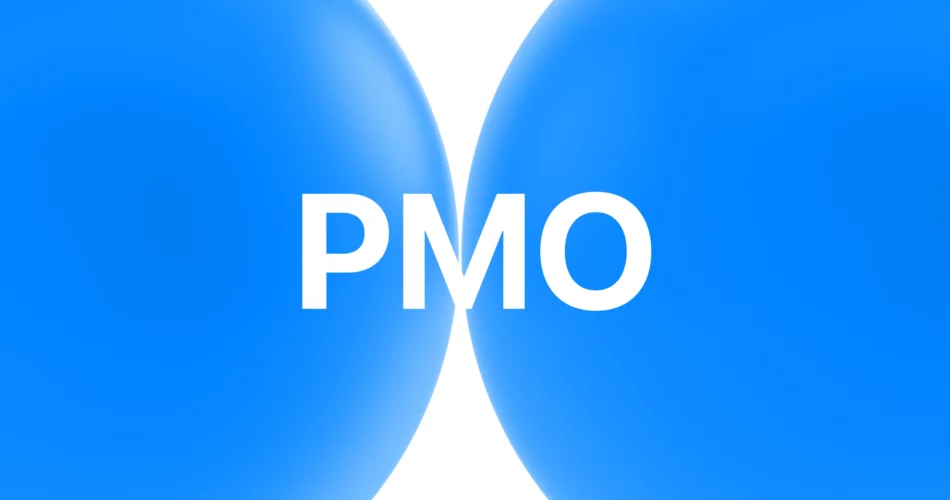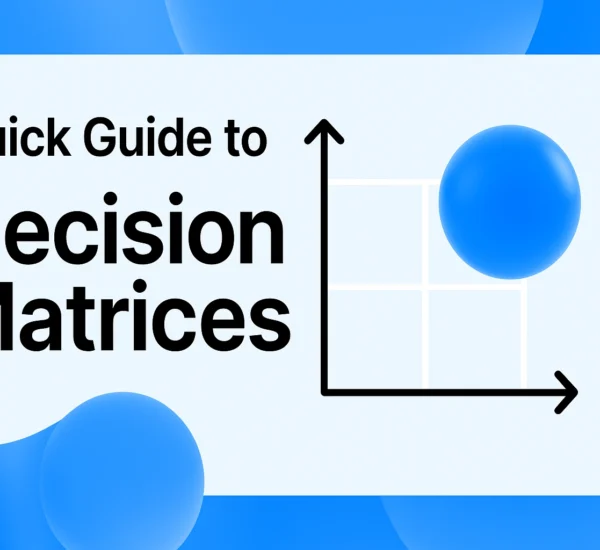A Project Management Office (PMO) acts as a centralized hub in organizations, standardizing project management practices and aligning projects with strategic goals. By offering governance, resources, and support, PMOs enhance efficiency, coordination, and project success rates.
Introduction
The Project Management Office (PMO) is an essential entity within organizations that aspire to manage projects in a standardized and efficient manner. It carries out the pivotal role of “ensuring that projects are executed in a way that aligns with business strategies and demonstrates that they deliver value to stakeholders.” Understanding what a PMO is, as well as its structure and functions, is key for project managers, business executives, and even students who wish to command the field’s ever-growing body of knowledge.
Tip
Establishing a PMO can significantly improve project efficiency by aligning projects with business strategies.
The PMO serves several functions in an organization, with the aim of enhancing project performance. This office establishes project governance and standardized practices that guide the way in which projects are managed and carried out. But the responsibilities of the PMO go far beyond that. It manages resources, ensures that there is good communication among stakeholders, and mitigates risks. For me, what’s most interesting about the PMO is its potential to become a truly data-driven office that uses the data it collects to make better decisions and to understand the performance of projects better, including through data-driven reporting.
For this business realm, when it comes to the diversity of project management offices (PMO), there’s something fundamental to grasp. This expansive categorizational system offers a window into the kinds of PMOs in place today. At one end are Supportive PMOs that more or less enforce voluntary standards (they sort of leave the door ajar). Then there’s the next step up in terms of structure and oversight: Controlling PMOs, which ensure voluntary compliance (with more structure than a Supportive PMO and less structure than a Directing PMO). At the high end of the PMO pyramid is the Central Nervous System model—the Directing PMO, which plays a crucial role in project management.
“Well-functioning” and “engine” are not terms one often hears when describing a PMO, but they should be.
When one attempts to implement a project management office, or PMO, one often encounters difficulties—especially resistance to change and insufficient support from executives. Nonetheless, the PMO’s value proposition is quite strong. It successfully resolves many project problems and, when done right, acts like a well-functioning project engine that allows an organization to achieve operational excellence. The PMO follows certain principles and acts in certain ways to achieve success, ultimately enhancing project execution.
No matter their size, companies can use the varied forms of PMOs to achieve improved project control and visibility. The definition of a PMO provided by the PMBOK® Guide reflects the improved capacity for effective project management that comes with a better-understood and rightly-situated PMO: “a dream shared across the entire organization that systematically builds the condition for project success.” You want your PMO to be a vehicle for that kind of project management condition, a not-too-big-and-not-too-small PMO well situated in your organization’s project management landscape.
|
PMO Type |
Description |
Characteristics |
|
Supportive |
Provides a consultative role, offering templates, best practices, and training to project teams. |
Low control, Resources and guidance |
|
Controlling |
Requires project compliance through various means and ensures adherence to specific frameworks. |
Moderate control, Standards enforcement |
|
Directing |
Directly manages projects, taking over the management and oversight of projects from project managers. |
High control, Centralized project management |
What is a PMO?
A PMO, or Project Management Office, is a centralized department in an organization. Its key responsibilities include defining and maintaining project management standards and practices, as stated in the PMBOK Guide. Either integrated within an organization or serving at its periphery, a PMO is essential for ensuring that the organization’s myriad projects align with and serve its strategic goals. A PMO might commonly be tasked with ensuring that the necessary documentation is maintained, that the right guidance is provided to the right people, and that the right metrics are being tracked to ensure that the organization’s projects are successful and worth the investment.
Fact
A PMO is crucial for aligning projects with an organization’s strategic goals.
Project Management Officers take on and perform many different functions, but they perform very few of their functions poorly. If that contradictory statement requires some explanation, what we’re getting at is that there are a whole host of reasons why project management offices exist and what they are supposed to do.
“A guiding statement from Darling & Whitty explains how the PMO functions have evolved over time, addressing stakeholder satisfaction and management’s expectations.”
In the organizational framework, project management offices are singular entities that are intended to bring order and efficiency to the projects they oversee. Their responsibilities are:
- Creating Consistent Standards and Processes: By establishing clear guidelines and methodologies, PMOs provide a uniform approach to project execution, as highlighted by work from the APM Body of Knowledge.
- Providing Oversight and Support: This includes offering resources and support to project teams, ensuring adherence to established practices, and resolving any issues that arise during project execution. The PMO acts as a central repository of project-related information and measures project success against key metrics and objectives.
- Aligning Projects with Strategic Goals: PMOs prioritize projects to align with the organization’s strategic direction, ensuring that resources are efficiently allocated across project portfolios. This approach prevents bottlenecks and enhances coordination, which is essential as an organization’s project complexity and volume increase, as found in a CIO article.
PMOs can take on several forms, depending on what the organization needs. They can be controlling, supportive, or directive. Each type has its benefits.
- Controlling PMOs enforce strict adherence to standards.
- Supportive PMOs provide resources and guidance without imposing rigid rules.
- Directive PMOs actively manage and execute projects, ensuring consistent application of standards.
Establishing a project management office (PMO) can be beneficial for an organization that aims to promote project management processes and enhance project efficiency and effectiveness. A PMO can help in the execution of projects and, more importantly, it can help ensure that all projects undertaken by an organization serve to advance the organization toward its overall business goals.
|
PMO Type |
Description |
Key Benefits |
|
Controlling |
Enforces strict adherence to standards and procedures. |
Ensures consistency and compliance across projects. |
|
Supportive |
Provides resources, guidance, and templates, without enforcing rules. |
Offers flexibility and assistance without micromanagement. |
|
Directive |
Actively manages and executes projects, applying standards consistently. |
Guarantees uniformity and thorough oversight on all projects. |
Functions of a PMO
In the realm of project management, the Project Management Office (PMO) is the foundational element for making projects more efficient and for aligning the work within projects with the institution’s goals. The PMO is a dedicated office that ensures three things: one, project management practices are standardized and followed; two, resources are used efficiently; and three, strategic alignment is achieved.
Example
A PMO maintaining a centrally managed project list creates a consistent project environment.
“A PMO must be very good at overseeing resource allocation, optimizing a workload balancing act that is part art and part science, and facilitating strategic decision-making.”
The core of a Project Management Office is the standardization of processes. This means establishing a common way of doing things—applying methods, tools, and best practices in a consistent manner across all projects. When a PMO maintains a centrally managed project list and sees to it that project managers follow the standard way of doing things, it creates a project environment that is consistent and clear.
A PMO’s documentation and best practices are essential functions that allow it to serve as a repository of knowledge and insights across a number of projects. The PMO might provide the kind of documentation that would allow a project team to assemble a form of “book of knowledge,” which contains the kinds of insights and worked-around problems that the PMO has encountered in the number of its projects. This would serve as a universal help guide for any project team working in any part of the organization.
Another critical PMO function is the training and supporting of project managers and their teams. The PMO not only offers basic training but also tailors coaching and mentoring to help project management professionals develop and refine their skill sets. Both types of training are vital for enhancing not just the immediate capabilities of project teams but also the project management culture within the organization.
In addition, PMOs play a crucial role in the strategic management of resources. Ensuring that projects are not only executed efficiently but also in line with an organization’s wider strategic objectives is a big ask of any entity. Yet this is precisely what a PMO must accomplish if it is to be regarded as a truly strategic partner.
|
Function |
Description |
|
Standardization of Processes |
Establishes uniform methods and best practices across all projects. |
|
Documentation and Best Practices |
Acts as a knowledge repository to guide teams with insights and solutions. |
|
Training and Support |
Provides training, coaching, and mentoring to enhance team capabilities. |
|
Strategic Resource Management |
Aligns project execution with organizational strategic objectives. |
While organizations struggle to stay ahead of the competition, PMOs must keep up and even get ahead of changing tides. They must evolve and adapt not just to changing business conditions but also to the very dynamic nature of the orchestration business (see “Orchestrate the Change,” PM Network, October 2023). Practices must be in line with the new needs of not just the changing business but also a transforming society (see “PMOs for a Brave New World,” PM Network, December 2014).
Benefits of a PMO
When an organization instantiates a Project Management Office (PMO), it has the potential to transform project management within that organization. The benefits are numerous and focus mainly on the structure that a PMO brings to project efficiency, tracking, and alignment with business objectives.
Fact
PMOs significantly enhance project visibility and control, allowing better resource allocation.
To begin with, the driving force of PMOs is to achieve better project completions. The obvious reason for this is that PMOs represent the organization on top of which they fall. When a PMO becomes very valuable to the organization, it has gained the respect it needs to reach a position in which it can affect the organizations above it. One valuable attribute that a PMO can sow in a project-driven organization is the standardization of how projects are executed.
Another primary advantage is the better information flow among the project’s varied parties that a PMO ensures. When a team is unsure of what to do, it is generally not because of a failure in the actual project execution but a failure in communication and coordination within the project’s many moving parts. A clear path of information to the right people at the right time goes a long way towards avoiding these nearly inevitable misunderstandings and mistakes PMOGI Global Institute.
The array of projects an organization runs is much more visible and much better controlled when a PMO is in place. This greater visibility and control allow business executives to prioritize and allocate resources across their project portfolio much more effectively, ensuring that all strategic initiatives are aligned much better than in a non-PMO environment PMO365.
“By promoting processes and eliminating redundancies, PMOs sharpen competitive edges and achieve considerable cost savings.”PMO365
In addition, they lead to greater efficiency and productivity. One way they do this is by providing project managers with a standardized structure for reporting to stakeholders that is clear, accurate, and hits all the necessary bases for making decisions that are more likely to make the overall project work better PMO365.
Identifying and mitigating possible project risks early can lead to better outcomes. This is what a PMO does. When a PMO is working with a project, it is looking down the road and trying to see what problems might crop up. If you work in an office where a PMO operates, it is much less likely that you will encounter a problem that the PMO could have managed but did not PMO365.
In addition, PMOs promote a culture of knowledge sharing, which is the cornerstone of any high-performance organization. It’s simple—when people share what they know, the organization becomes exponentially smarter. PMOs also offer a wealth of mentoring and development opportunities for project managers. Yet, there’s a third, subtler role the PMO plays in the organization. The PMO helps project managers and their teams establish a solid baseline of project management knowledge, which in turn leads to consistent skill enhancement and leadership development of those holding project manager positions PMOGI Global Institute.
The final way that PMOs support an organization is by ensuring that projects line up with the long-term plan. When a project gets started, it’s not always fully clear how much it aligns with a long-term strategy. But PMOs can help to identify this alignment and ensure that the projects undertaken are financially worthwhile and strategically positioned PMO365.
Embedding a project management office into an organization is not merely about boosting project management practices. It’s about installing an effectual structure that allows the organization to perform a “whole system” calculus, aligning all its constituent parts with its strategic goals. For project management practitioners, business executives, and students who want to comprehend better the comprehensive benefits of a PMO, a set of recent research studies delivers a potent message.
|
Benefit |
Description |
|
Better Project Completions |
Achieving higher efficiency and respect within an organization by standardizing project execution. |
|
Improved Information Flow |
Ensuring clear and timely communication among project parties to minimize misunderstandings and errors. |
|
Enhanced Visibility and Control |
Allowing executives to prioritize and allocate resources more effectively, aligning with strategic goals. |
|
Efficiency and Productivity Gains |
Providing project managers with standardized reporting structures for better decision-making. |
|
Risk Identification & Mitigation |
Proactively identifying potential risks to improve project outcomes. |
|
Knowledge Sharing Culture |
Promoting an environment where sharing knowledge leads to a smarter organization, alongside offering mentorship opportunities. |
|
Strategic Alignment |
Ensuring projects are in line with an organization’s long-term strategy and are financially and strategically sound. |
Conclusion
Understanding how a Project Management Office (PMO) can change the game for a project is vital to reaping the benefits of that office. Because the PMO is at the center of communication and governance, it ensures that a project is not only efficacious in its own right but also aligned with the overarching strategy of the organization. Even more so than project teams, PMOs are focused on “the big picture,” which means they are at least as concerned with the knowledge gained in one project and used (or not used) in another as they are with the successful delivery of a single project.
Tip
Aligning projects with strategic goals is a key function of a PMO, emphasizing its strategic importance.
PMOs can lead teams in adopting best practices that also keep the teams aligned with the overall goals of the corporation. To understand how PMOs can do this and what forms they can take, from supportive to controlling to directive, we need to first comprehend the nature of PMOs. They are, in essence, a pathway to the corporate goal. When an EPMO (enterprise project management office) steps in, it tends to offer a more comprehensive solution—improving both oversight and alignment at the strategic level.
A PMO’s primary functions — project governance, portfolio management, resource allocation, and risk management — underscore its importance in refining operational efficiency and decision-making. According to a guide on PMO roles and responsibilities, these roles can significantly reduce project costs and foster cross-functional collaboration.
|
Primary Functions of a PMO |
Benefits |
|
Project Governance |
Enhances adherence to project goals and standards |
|
Portfolio Management |
Aligns projects with organizational strategy |
|
Resource Allocation |
Optimizes use of available resources |
|
Risk Management |
Minimizes potential project risks |
These offices do this by implementing robust tools and processes, like the ones provided by Any.do’s project management solutions, that guide their organizations toward consistently reaping the benefits of well-managed projects. That’s what a PMO is and does, at least in principle. When it comes to acting on project management’s promise, offices that call themselves “PMO” are more effective at some organizations than others.
Project managers and business leaders aiming to get the most out of their workflows can consider using productivity software like Any.do’s tools. These software platforms can potentially complement the PMO strategy. They don’t just send you reminders about what you need to do—they help you track projects and collaborate more effectively. And they do it all in a way that’s perfectly compatible with using mobile devices (e.g., Android and iPhone) as part of the back-and-forth project team experience. That’s just one way in which these digital solutions can help the PMO serve its mandate.


